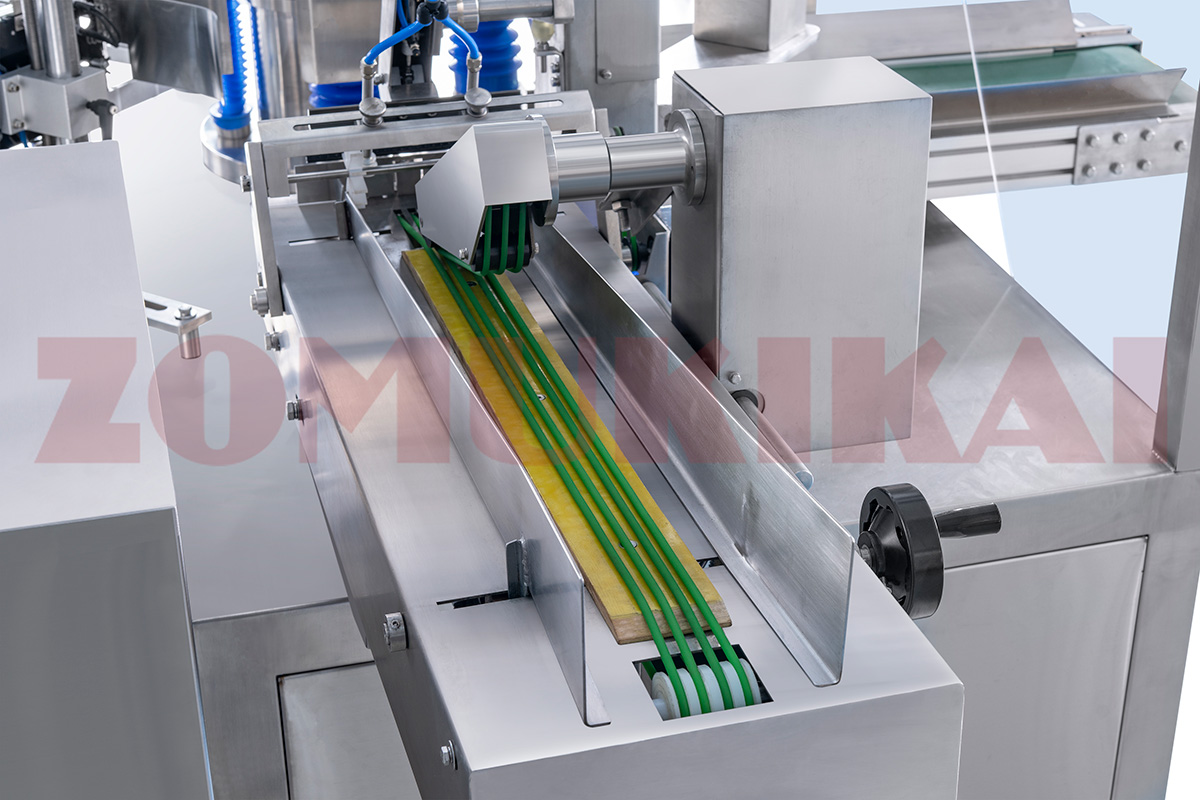Different Bag Types, Different Bag Feeding Methods
Choose the Best bag feeding for Your Pouch Packaging

In the world of automated packaging, rotary pouch machines are widely used in food, pharmaceutical, and chemical industries due to their efficiency and reliability. When it comes to feeding pouches into these machines, there are two main methods: vertical bag feeding and horizontal bag feeding. Each has its own advantages and is suitable for different types of pouches.
This article will break down the working principles, suitable pouch types, and how to choose the best feeding method for your packaging needs.
• How it works:
Pre-made pouches are neatly stacked in the bag magazine. A suction cup picks up the bottom pouch and transfers it to the main rotary station.
• Suitable pouch types: Flat pouches (e.g., three-side sealed bag); Stand-up pouches (without zippers or spouts)
• Pros: Ideal for small to medium-sized packaging applications, takes up less space; Simple operation, lower maintenance costs.
• Cons: Requires pouches with sufficient stiffness; soft pouches may cause pickup issues; Not ideal for thick pouches (e.g., zipper pouches), as they may stack unevenly, affecting suction accuracy.
• Capacity: 8-station rotary pouch fill seal machine: 20-60 pouches per minute; Dual-station pouch filling and packing machine: 40-110 pouches per minute
• How it works:
Pre-made pouches are laid flat and overlapping in the bag magazine. The suction cup picks up pouches one by one from front to back and transfers them to the main rotary station.
• Suitable pouch types: Flat pouches (e.g., three-side sealed bag); Stand-up pouches (including zipper and spout pouches); Soft or thick pouches (e.g., aluminum foil, multilayer composite pouches)
• Pros & Cons: Compatible with various pouch types, especially those that don’t stack evenly (e.g., zipper and spout pouches); Larger pouch storage capacity, with the option to extend the bag magazine for less frequent refilling.
• Cons: Requires more floor space compared to vertical bag feeding; More complex structure, slightly higher equipment cost.
3. Choosing the Right Bag Feeding Method
If your pouch type is:
| Pouch Type | Recommended Feeding Method | Notes |
| Flat pouches (three-side or four-side seal) | ✅ Vertical bag feeding | Simple, efficient, and space-saving |
| Stand-up pouches (without zipper or spout) | ✅ Vertical bag feeding | Ensure pouch stiffness for stable suction |
| Zipper pouches / Stand-up pouches with zippers | ✅ Horizontal bag feeding | Prevents misalignment and sealing issues |
| Spout pouches | ✅ Horizontal bag feeding | Ensures stable suction and pouch positioning |
| Soft or thick pouches | ✅ Horizontal bag feeding | Improves accuracy and prevents deformation |
4. Can Zippered Stand-Up Pouches Use Vertical Bag Feeding?
Technically, yes—but with some limitations:
• Due to the thickness of the zipper, stacked pouches may curl at the edges, affecting suction accuracy.
• Depending on the zipper thickness, only 20-50 pouches can be stored at a time—much less than horizontal bag feeding.
• If the pouch shifts during suction, it may result in uneven sealing, impacting final packaging quality.
Recommendation: For zipper pouches, stand-up pouches, and spout pouches, choose horizontal bag feeding for better stability and precision.
5. Conclusion
Both vertical and horizontal bag feeding methods have their strengths. The right choice depends on factors such as pouch type, storage capacity, and available space.
• Flat pouches → Choose vertical bag feeding for a simple and efficient setup.
• Zippered, spouted, and stand-up pouches → Choose horizontal bag feeding for accurate suction and consistent sealing.
Selecting the right bag feeding method enhances machine stability, streamlines your packaging process, and boosts overall production efficiency!
Tell us what kind of pouches you need to package, and we’ll recommend the best solution for you!


